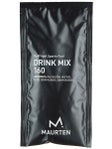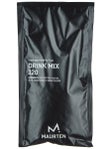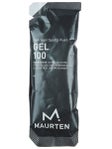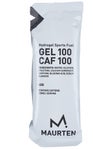Road To Paris
RWA Athlete's Journey
Updated 16th July 2024
2 Weeks To Go
Next Stop: Paris
I am delighted to announce my selection to the 2024 Australian Olympic Team! This will be my second games and just like in Tokyo I am honoured to have the priviledge to represent myself and my country.
I would like to extend a massive thank you to Running Warehouse Australia for their support of me and my journey!
The mens 20km Racewalk starts the athletics program on August 1, at 7:30am local time.
The mixed marathon Racewalk relay features one week later, on August 7.

9 Weeks To Go
St Moritz Arrival
Every year hundreds of athletes from every corner of the globe descend on the Swiss ski town of St Moritz. Nestled in the Swiss Alps, St. Moritz is an endurance athlete's paradise. Renowned for its high-altitude training benefits, this picturesque town offers stunning mountain trails, long empty roads, crystal-clear lakes, and world-class sports facilities. Athletes flock here to take advantage of the thin air, which boosts red blood cell production, enhancing performance. Popular with runners, cyclists, triathletes, and race walkers St. Moritz provides everything the high-performance athletes needs to train at their very best beyond training, the vibrant local culture, luxurious accommodations, and rich history make it an unforgettable destination on its own.
The drive from Zurich was filled with every climate imaginable, and makes for an unforgettable experience. Warm, dry air and rolling hills greet you as you enter Switzerland, but as the road points up temperatures drop quickly. Green fields become rocky mountain passes, and some very cold Spring temperatures mean these passes are still full of snow and ice above 2000 metres. Thankfully, as you enter the valleys you return to warmer air and drier roads.
The week to be is very light, to allow the body to adapt to the higher altitude. A gym session an easy treadmill walk are all I need on day one, and the rest of the week is filled with easy walks and jogs before the intensity ramps up next week.
10 Weeks To Go
Fuelling the 20k and Marathon Relay
Two weeks into a three week training block and fatigue is starting to set in. One week from now I’ll be in the Swiss Alpes: St Moritz; walking and running around Europe’s premier high-altitude training venue. Until then, more training needs to be completed. More race-specific work gets incorporated into the program this week, with 16 kilometres of 20k-specific pace in an early week workout.
The training program:
- Monday: easy runs
- Tuesday: race-pace workout. 4k, 3k, 3x2k reps separated by more moderately paced 1k reps. The ultra-responsive ON Cloudboom Echo 3 were the perfect shoe for this workout, allowing me to quickly switch between paces between reps.
- Wednesday: easy walks and gym
- Thursday: easy runs
- Friday: track workout. 12x500 at 5k-10k pace. A super-quick acting caffeine hit from Revvies strips helps to
- Saturday:
- Sunday
Blog spotlight: Fuelling the 20k and Marathon Relay walks
Fuelling the walk events is just like fuelling for a half-marathon or marathon. Timing and food choices are everything, starting from two to three days before the event starts. When it really counts, I start my carb-load from three days (or 72 hours) before my event’s scheduled start time. In a very contemporary take on carb-loading I strip all the “unnecessary” fibre out of my diet. This allows me to maximise the carbs I’m taking in while minimising my stomach and gut contents, helping me to digest food faster and fill my muscle glycogen for efficiently - with the added benefit of reducing gastric discomfort and even reducing a bit of body weight.
My go-to food staples include white rice, rice cereal and milk, juice, and sports drink. I tend to eat these same foods and drinks at each meal, which can get boring, but is highly practical and gets the job done.
I find that a solid three-day carb load is enough to provide enough lasting energy for the 20 kilometre distance, but a few sips or Maurten drink mix, or a single 100-Caffeine gel goes a long way in helping save a bit of muscle glycogen for that final lap surge. The marathon relay is more challenging, apart from being a longer distance we have to deal with the 45-50 minute “break” in-between relay legs. This break just gives the body more time to burn through glycogen, which could harm repeat performances in leg two. The solution: more carbs in leg one, and a big sugar hit between legs to keep the engine running hot. For me, this looks like a bottle of Maurten 320 in the rest period, and an extra Gel 100 in leg one!
11 Weeks To Go
Race Recap: Stacked fields in Coruna
What turned into a deeper race than last years World Championships (22 men went under the Olympic standard, and ten went under 1:19:00), I fell short of my goal to return to a sub-80 minute 20k. Even with just two weeks since my last race, I knew I had more in me than my recent form had suggested. Five, ten, and fifteen kilometre splits of 19:46, 19:48, and 19:50 suggested it was a good day for walking fast, but a major lapse of concentration followed by a conservative last 20 minutes to prevent a last-minute disqualification meant all the progress I had made to reach under 80 minutes was washed away. The final five kilometre split of 20:56 sealed my fate, I finished just quicker than I had in China almost four months ago.
With the racing season concluded until the Olympic Games in August, my string of performances ranges from 1:20:00 to 1:21:01.
Taicang, China: 1:20:00
Olympic standard: 1:20:10
Warsaw, Poland: 1:21:01
A Coruna, Spain: 1:20:20
I’ve never raced so many Olympic-distance events this early in a year, and its taken a toll. While I was excited and happy to reach each of these start lines I’m eager to return to the predictable pattern that is a normal training block. None of these races were the standout performances I wanted after such an amazing season last year, but the ability to bounce back so consistently week after week fills me with confidence for the year ahead.
Whats next?
The next three weeks get busy with training as I try to bank as much fitness as possible before travelling to the home of European altitude training: St Moritz, in Switzerland. I’ll take you through all the ins and outs of training, while sprinkling in some competition tips and tricks to keep things interesting.
13 Weeks To Go
Race Recap: Warsaw
Today we jump right into the deep end: a 20 kilometre race right in the heart of Warsaw. A massive contingent of Chinese and Australian athletes facing off with the best of Brazil, Poland, and Lithuania, among other countries. The morning air was crisp and refreshing. Warsaw was starting to heat up as Europe leaves winter behind, but the morning temperature was perfect for racing.
Conservative early splits of around four minutes per kilometre were welcome, though felt harder than they should have. The first 15 kilometres ticked away nicely, just under 60 minutes. The final five kilometres told a very different story though. Starting with a sensation of “flatness” that any seasoned runner or walker would understand, it progressed into nausea and an upset stomach. As my lead-pack start slipped away and I faded into fifth and then sixth I give one last surge on the final 1200m lap of the city centre. This surge lasted approximately 500m ("I tried to respond to the Italian walker overtaking me") before the overwhelming urge to empty my stomach took over.
With this, a 6th place finish was still respectable and came with a one hundred euro pay check. My final time: a smidge over 1:21.
Race Splits:
5km: 20:02
5-10km: 19:52
10-15km: 19:55
15-20km: 21:11
My attention now turns to the last planned race of this point of the season: another 20k in La Coruna, on the northern coast of Spain. This will be my second time in Coruna, with my first showing (1:23:58) in 2022 being a harder day than the one I’ve just described above.
14 Weeks To Go
Post Race Week
After competing in the Marathon Relay last week, and before heading to Warsaw to continue racing next weekend I spent my time training in Antalya. This is an ancient city, known for its long beaches and long mountain ranges that extend from its coastlines. While I took some time to visit ancient ruins and natural waterfalls, I am ultimately here to train and recover. The post-race week was spent doing easy walk and run doubles, before hitting some intensity and backing up with a long walk over the weekend. As we enter the following week, we back off the training in anticipation of the 20 kilometre race coming up.
Anyone that has trained for a marathon or half-marathon will be familiar with this sort of training. You may even want to steal some of these sessions or training patterns for yourself!
Monday: rest
Tuesday: 12km walk, with a 6km run in the afternoon
Wednesday: 16km walk, with a 6km run in the afternoon
Thursday: gym workout, and a day spent sightseeing
Friday: 14km walk, with another 6km run in the afternoon
Saturday: 5k, 4k, 3k at 4:08 down to 4:02/km, fuelled by Maurten 160 Gels. I love the size of these gels, and they’re designed to be taken without water, which is essential for an unsupported solo workout. This afternoon I got another 6km run in.
Sunday: 20km long walk, with bottles and gels stored in a Salomon Active Belt, another solo training essential.
Blog Spotlight: Beta Alanine and Sodium Bicarbonate
Two products I’ve been using to enhance training and competition performance this year are Science in Sport Beta Alanine and Maurten Sodium Bicarbondate.
Beta-alanine is a non-essential amino acid that combines with histidine to form carnosine in muscles. During exercise, carnosine buffers the acidity produced by lactic acid buildup, delaying muscle fatigue and enhancing endurance. Supplementation with beta-alanine increases muscle carnosine levels, improving performance in activities requiring high-intensity efforts lasting 1-4 minutes.
Like carnosine, Sodium bicarbonate acts as a buffering agent in the body. During exercise, it helps neutralise the buildup of lactic acid, delaying fatigue and improving performance in activities requiring short bursts of high intensity. By reducing acidity in muscles, sodium bicarbonate allows athletes to sustain higher levels of exertion for longer periods. However, its effectiveness can vary among individuals, and side effects like gastrointestinal discomfort may occur with high doses.
Science in Sport Beta Alanine can be bought at runningwarehouse.com.au, and while the Maurten Bicarb system isnt available in Australia, you cna find Human AMP lotion runningwarehouse.com.au
15 Weeks To Go
World Team Championships: Race Recap
Before sending any athletes to compete in the Marathon Relay in the Olympic Marathon Relay, Australia first had to qualify a relay team. The World Athletics Racewalking Team Championships in Antalya, Turkey was THE opportunity for 22 countries to qualify for this new Olympic event. Of these 22 countries, only five of the best would have the opportunity to qualify two teams to compete in Paris.
Rhydian Cowley and Jemima Montag, along with Rebecca Henderson and myself made up the two Australian teams good enough to qualify within this select group of five countries, placing 6th and 16th out of 67 teams to start the race. The race opened ridiculously fast: a 47:53 12.195km first leg, followed by a tactical 42:13 second 10km leg. The time between, waiting for my relay partner to complete each of her 10km segments was spent plunged into a ice bath, before laying down with my feet suspended in the air, sipping Maurten drink mix.
Time penalties and disqualifications can happen during the walk events, and our team of two faced a three minute penalty during the third leg of the race. Amazingly, we held strong over the final 10 kilometres to bring ourselves back from 22nd to 16th.
Whats next?
The next two weeks will be spent in Antalya, Turkey recovering and returning to training before travelling to Warsaw, Poland for a 20 kilometre event. Recovery after a long effort can look different for everyone, but I follow some basic principles that I’ll pass on to you here:
Nutrition: Proper nutrition plays a crucial role in aiding your body's recovery process after a race. Replenishing depleted glycogen stores, repairing muscle tissue, and reducing inflammation are among the top priorities. Aim to consume a balanced meal containing carbohydrates, protein, and healthy fats within the first hour after finishing the race. This could include a mix of whole grains, lean proteins, fruits, and vegetables.
Hydration is also paramount. Replace lost fluids by drinking plenty of water or electrolyte-rich beverages throughout the day. Be mindful of electrolyte levels, especially if you sweated heavily during the race.
Foam Rolling: Post-race muscle soreness is inevitable, but foam rolling can be a game-changer in alleviating discomfort and enhancing recovery. Foam rolling, or self-myofascial release, involves using a foam roller to apply pressure to specific points on your body, targeting tight muscles and fascia.
Devote time to foam rolling sessions in the days following the race, focusing on areas of particular tightness or soreness. Roll slowly over each muscle group, pausing on tender spots (trigger points) for 30-60 seconds to allow the muscle to release. Areas commonly targeted include the calves, quadriceps, hamstrings, and glutes.
| ROAD TO PARIS EVENTS | DATES |
|
Australian Championships |
April 11th (Gold medal Championship Record) |
|
Racewalking World Cup |
April 22nd |
|
Tour Race: Warsaw |
May 5th |
|
Tour Race: La Coruna |
May 18th |
|
Team Selection |
June 30th |
Meet Declan
I’ve been in and around athletics since I was five years old, training and competing until the senior ranks – where I discovered a talent for the racewalks.
In 2021 I scraped my way onto the Australian Olympic team in Tokyo, qualify as the 54th of 60 athletes in the Mens’ 20km event. Since then, I have climbed up the world rankings while setting new personal bests in every distance and claiming national records in the 5000 and 10000 meter events. I love the physical and technical challenge that comes with the event. The extra demands of a specific racewalking technique on top of the tactical and physical demands of an endurance event mean the walks are, in my opinion, the perfect endurance event.
What are the walks? Racewalking has been a modern Olympics event since 1908 (Men) and 1982 (Women), featuring race distances from 3500m to 50 kilometers, as well as a mixed marathon distance relay to be introduced in 2024. Racewalking demands two criteria – that the walkers leading leg be straightened, and that no observable loss of contact happens between the walkers feet and the ground. Breaking these rules can lead to time penalties and disqualification.






